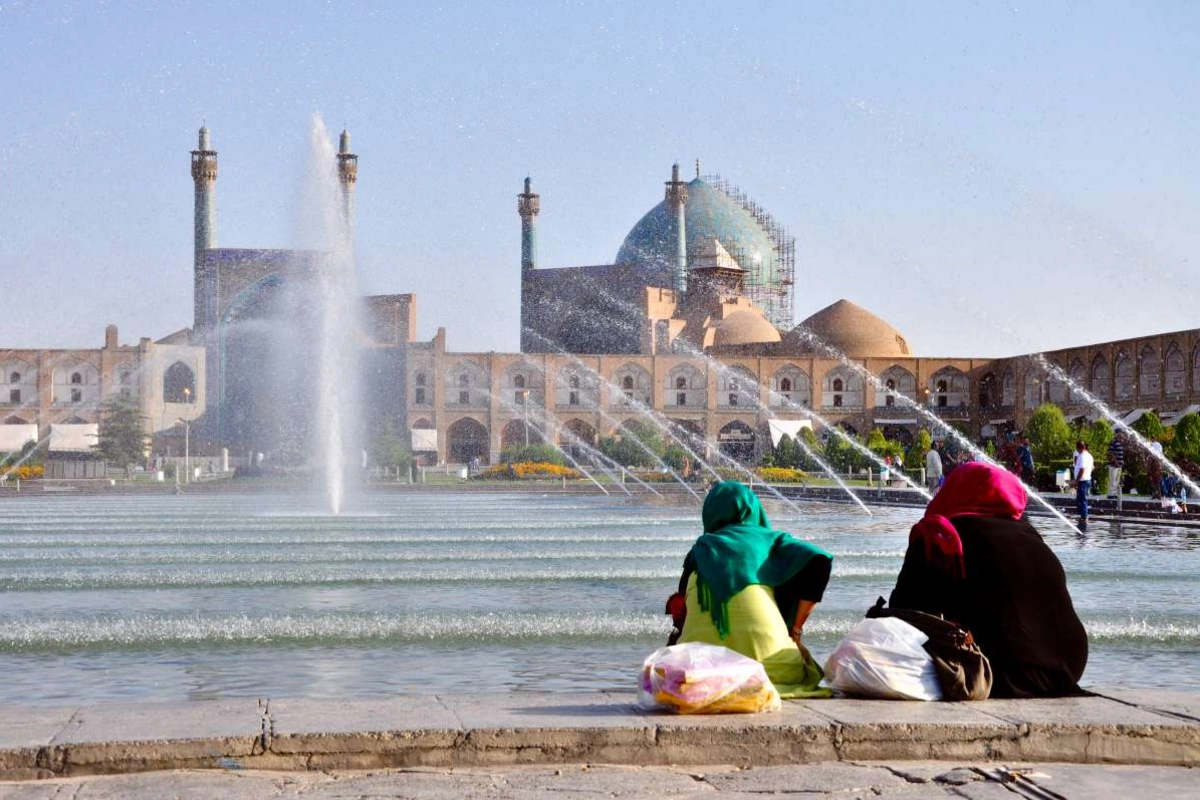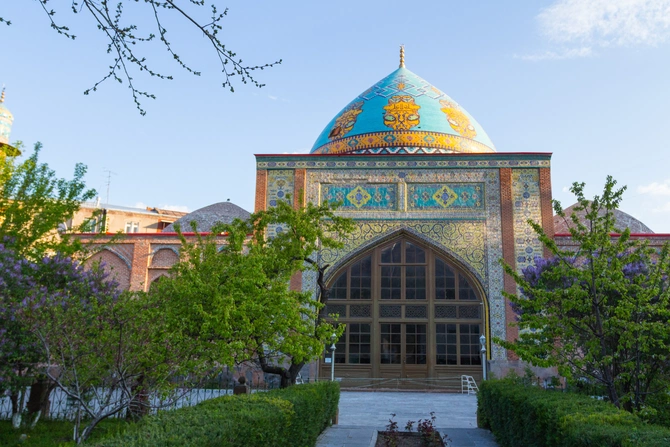
As the holy month of Ramadan begins, Edward Rowe looks at four of the Caspian Region’s important, if lesser-known, Islamic gems.
Image: Wojtek Chmielewski/Shutterstock
The Caspian region can be well described as a multicultural and multi-confessional melting pot, and Islam is a key component of that mix. Muslims have had a longstanding presence in the region dating back to the seventh century.
Today, a majority of the populations of most Caspian countries consider themselves Muslim, and there are significant minority populations in both Georgia and Russia.
The centuries-long Islamic presence has gifted the region with many beautiful mosques.
The earliest examples include the Juma (Friday) mosques of Derbent in Dagestan, Russia, and Shamakhi in Azerbaijan. On paper, at least, both are the first known mosques in their respective countries, with foundation dates in the eighth century under the rule of the Arab Umayyad dynasty and caliphate. The one in Derbent is believed to have been founded in 734 CE by the Umayyad prince Maslama ibn Abd al-Malik, the son of Caliph Abd al-Malik (r.686-705 CE), who in turn had founded Jerusalem’s iconic Dome of the Rock. It is worth noting, however, that the physical structures of such buildings do not necessarily appear anything like the mosque’s historic original design. What you see today in the great mosque in Shamakhi, for example, is certainly not how the original would have looked in 744 CE. Today’s magnificent stone iteration dates from a 2013 rebuild, albeit incorporating central elements of an older core that had itself been entirely restyled after earthquakes in 1859 and 1902.
Many other historic Caspian mosques are world-renowned for their splendour and architectural grandeur. The nineteenth-century Nasir al-Mulk Mosque in Shiraz, Iran, boasts almost kaleidoscopic stained-glass windows. In Uzbekistan, Samarkand’s Bibi Khanum Mosque dazzles with the turquoise majolica of its domes and iwans.
Many other, perhaps lesser-known, mosques in the Caspian region also reflect the area’s fascinating history, culture, people, and mind-blowingly mish-mashed heritage.
Here are four interesting examples:
Opened in 2014, and named after Azerbaijan’s late former president Heydar Aliyev, Baku’s Heydar Mosque is believed to be the largest in the South Caucasus. Its two ornate domes and four towering minarets make it a sight to behold, especially when lit up at night. The structure’s symbolic significance is perhaps even more noteworthy.

The Heydar Mosque is non-sectarian and is open to worshippers from both of Islam’s Sunni and Shia traditions. While Muslims in Azerbaijan are largely Shia, the country is home to Sunnis as well, and at the Heydar Mosque, they pray side by side. The mosque also employs both Sunni and Shia functionaries to lead the prayers and cater to the needs of the congregation.
“It is very gratifying that in the history of Azerbaijan, there has never been a religious conflict and sectarian discrimination,” the Grand Mufti of the Caucasus (Azerbaijan’s highest-ranking Islamic official) Allahshukur Pashazade told the Caspian Post.
For some, the mosque underscores these sentiments and can even be said to represent fraternal unity between Azerbaijan’s Muslims, who make up part of their country’s religious and cultural mosaic that includes longstanding Christian and Jewish communities as well.
Some mosques visually highlight the diverse cultural influences stemming from the Caspian region’s immense Eurasian geography. A spectacular example is the architecture of the central mosque of Zharkent (Jarkent), a city in southeastern Kazakhstan close to the key Horgas border post with China.

The mosque’s construction was completed in 1895 without using a single nail. It was funded by donations from Zharkent’s Muslim community, and the project was led by the Chinese architect Hon Pike. Reflective of his roots, the building looks stylistically like a Chinese Pagoda, similar to other mosques across the border. The structure survived a 1910 earthquake but was variously repurposed during the atheist era of Soviet rule as a warehouse, a granary and, at one point, a barracks for border guards. The mosque is still not open for worship, serving instead as a museum. Nonetheless, it is popular with tourists and has been used as the set for several locally produced films.
Another cross-border architectural style can be found at the other edge of the Caspian region. Georgia’s Adjara province borders Turkiye and is home to a notable Muslim population. The territory previously belonged to the Ottoman Empire until Istanbul ceded it to Russia in 1878.

Adjara boasts roughly 50 wooden mosques, some almost two centuries old. To fans of the British sci-fi TV serial Doctor Who, these mosques might resemble something of a Tardis. That is to say, a structure that appears small and unassuming on the outside but is spacious and impressive on the inside. If not for their minarets, these mosques could blend seamlessly into their surroundings and might even be mistaken for farmhouses or mountain lodges. Their exquisite interiors are often painted in various colours and sport impressive minibars (pulpits), whether wooden or stone and decorated with tracery.
Though they date back to the Ottoman period and tend to have Ottoman-style pencil minarets, these buildings are, first and foremost, architecturally Georgian. In fact, mosques built in this style across the border in the Turkish province of Artvin are sometimes referred to by Turks as “Georgian” mosques.
Before 1917 Yerevan’s population was estimated to be around 43% Muslim (much as Baku once had a very significant Armenian population), but 20th-century conflicts and de facto deportations have reduced such populations to almost nothing. These days Yerevan’s Blue Mosque is the only functioning mosque in Armenia. It was built in the 1760s when Yerevan was part of the Erivan Khanate, then ruled by Hoseyn Ali Khan. Its grand turquoise dome somewhat resembles famous Safavid dynasty equivalents, such as the majestic Shah Mosque in Isfahan. Like other places of worship that avoided outright demolition, the mosque was repurposed by the Soviets as a museum in the 1930s. After restoration in 1999, it reopened to visitors with twice-daily prayer times aimed at a tiny congregation of the city’s Iranian residents. The complex also includes spaces for Iranian cultural activities such as Farsi classes and arts and crafts exhibitions.

Share on social media
